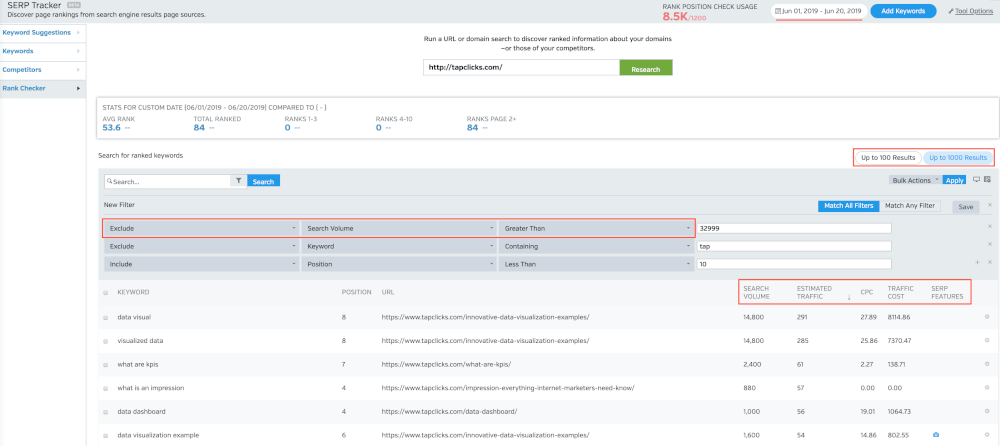Having a list of keyword opportunities for a client impacts your content calendar, advertising, and which rankings to monitor.
There’s a risk of targeting organic and paid keywords that are irrelevant to your audience, which would bring you traffic, but not traffic not necessarily interested in your brand. Additionally, if your keywords are too competitive, you could get drowned out by a competitor’s budget or greater content efforts. Therefore, finding the right keywords to target is key to an efficient marketing strategy.
Sure, deep dives into data can be useful, but sometimes you don’t have time to mess with spreadsheets. Focus your energy by using these three, trusty indicators to build a shortlist of keyword opportunities.
Every keyword on your list should have the following characteristics:
- High impressions
- Long tail
- Near the first page of Google
With that in mind, let’s build your keyword opportunities list.
1. High Impression Keywords
First in SEO > Google Webmaster Tools > Top Searches, sort by highest impressions. Then click Table Tool Options > Pagination > 100 to see your top 100 high impression keywords. Try this spreadsheet-free tactic using Raven.
The first characteristic you want for keyword opportunities is visibility. Focus on keywords that already are getting lots of eyeballs.
If you already have the audience, half your work is done. Now you can make create more engaging content around specific keywords in order to increase traffic.
Using Google Webmaster Tools data, sort your ranking keywords by high impressions and build your list from the top 100 phrases.
2. Long Tail Keywords
Next, scan your 100 high impression keywords and click Gear Icon > Add to Keyword Manager next to any phrases with three or more words to focus only on long tail keywords.
The majority of search traffic comes from highly specific phrases with multiple words rather than one and two-word phrases. You can build marketing campaigns much more easily around these long tail keywords made up of multiple words.
Google searches for things like “shoes” and “men’s shoes” are a competitive target. However, ranking for something like “glow in the dark skull bowling shoes” is attainable.
Using your list of high impression keywords, remove any phrases with one or two words from your list, leaving only the long tail.
3. Keywords Near The First Page of Google
Finally, go to Campaign > Keyword Manger. Sort by highest Avg. Rank and select any long tail phrases in positions 6 through 12. Select Add Tags from the action menu and click Apply. Add a tag so in the future you can use filter sets to display only your keyword opportunities list.
Moving up one position in rankings correlates with a much higher click through rate and therefore more traffic and potential sales.
And since 71% of all organic clicks are coming from Google’s first page of results, it’s also a great strategy to work to move from page two to page one to drive more traffic.
Using your list of both high impression and long tail keywords, cull your list further by focusing on keywords ranking between 6 and 12. This will narrow keywords to those that have the most opportunity for increased traffic which just a small bump in rankings.
What’s your process for building a list of keyword opportunities?

Give your keyword research a massive boost by immediately getting actionable intelligence on the competition.







Very informative and useful article. I’ll consider this and will implement… A great thank you…!!!
Really helpful article for marketers who understand the value of SEO but don’t have an in-depth technical knowledge or formal training on the subject matter. Thank you!
Sure thing Mallory! Exactly. This technique is a great place to start, especially if you have limited time. With more time and more specific goals, you can do much more.
This is exactly how I use raven tools and I’m killing it for my customers. Love Raven!
That’s awesome! It’s cool hearing this is an easy win 🙂